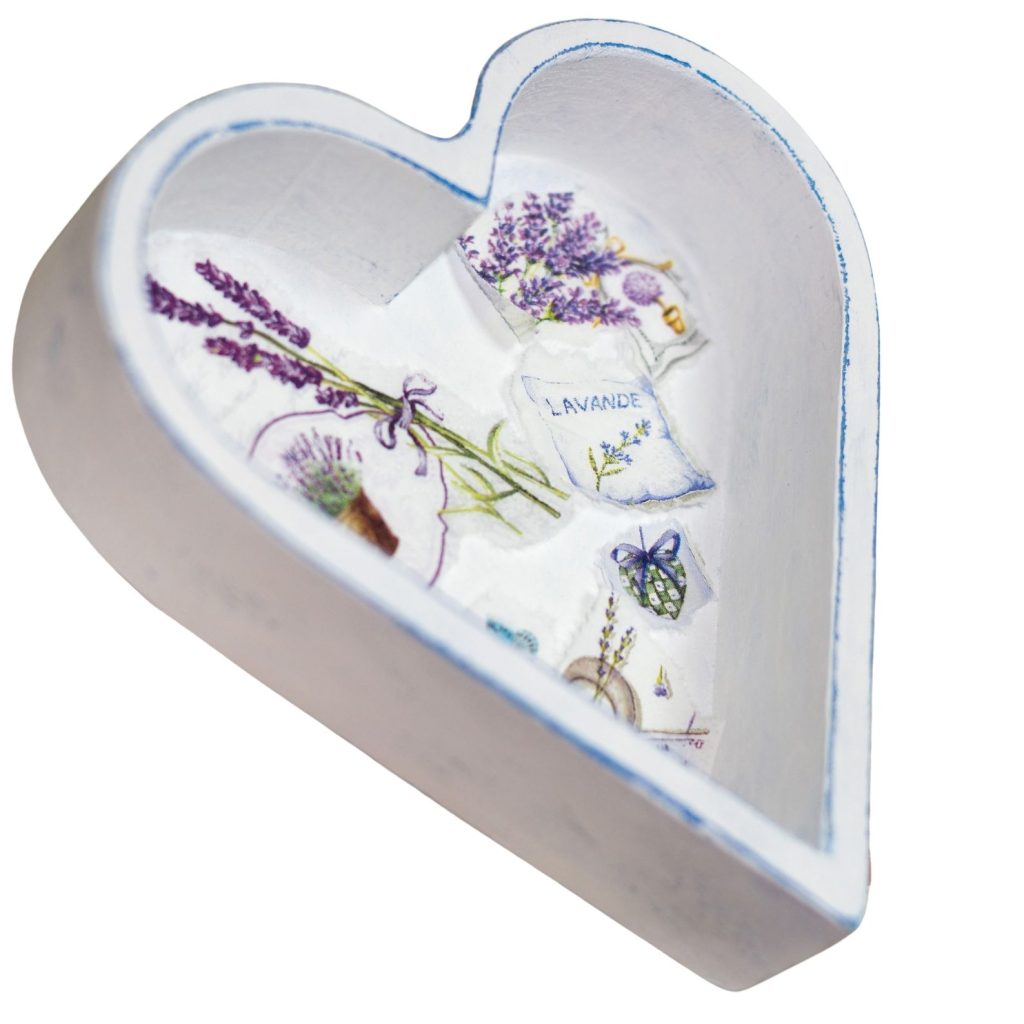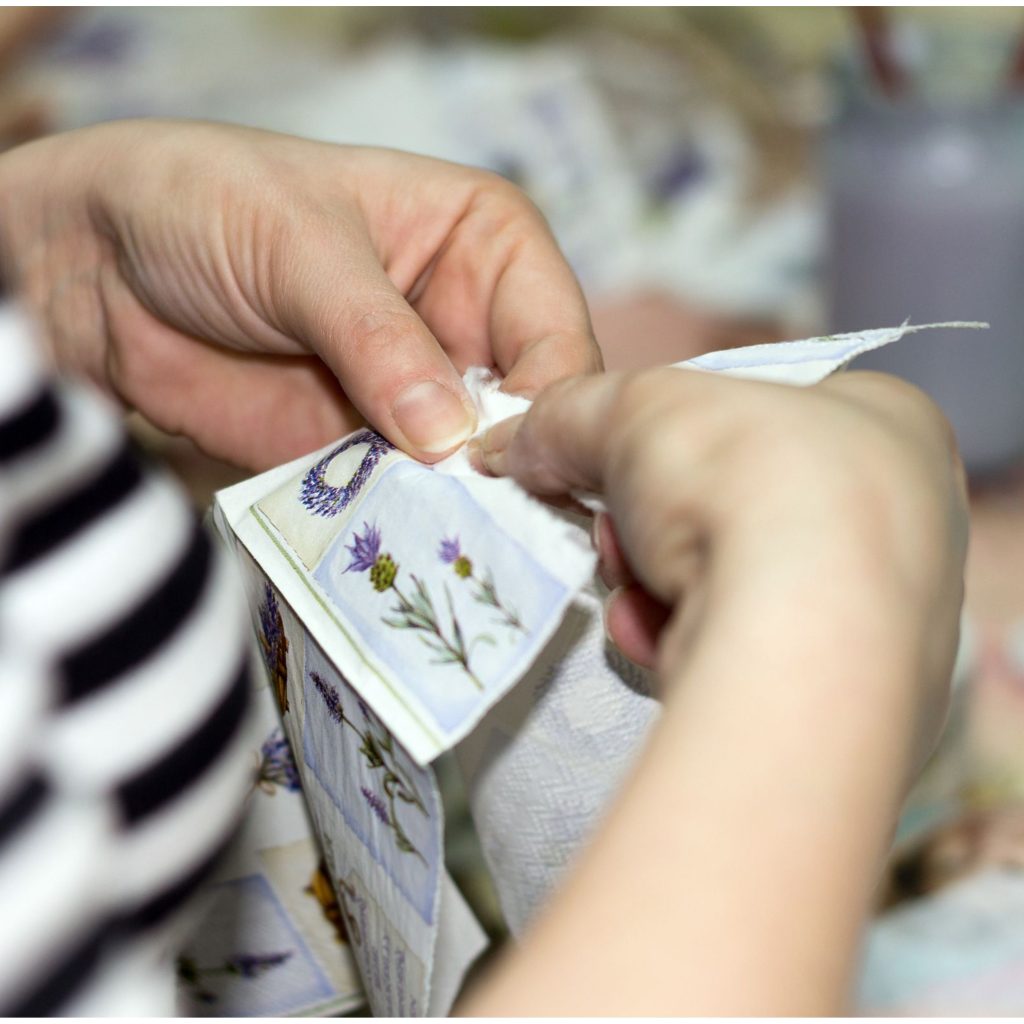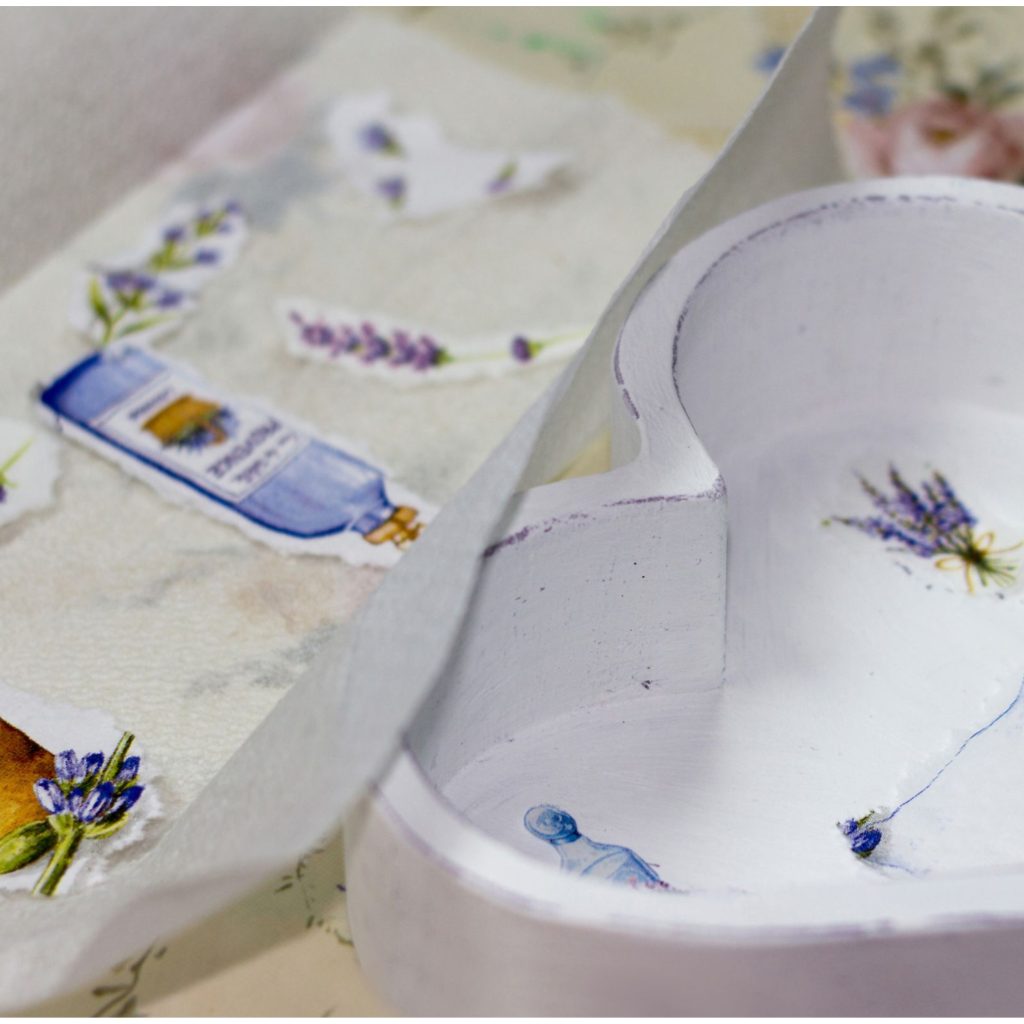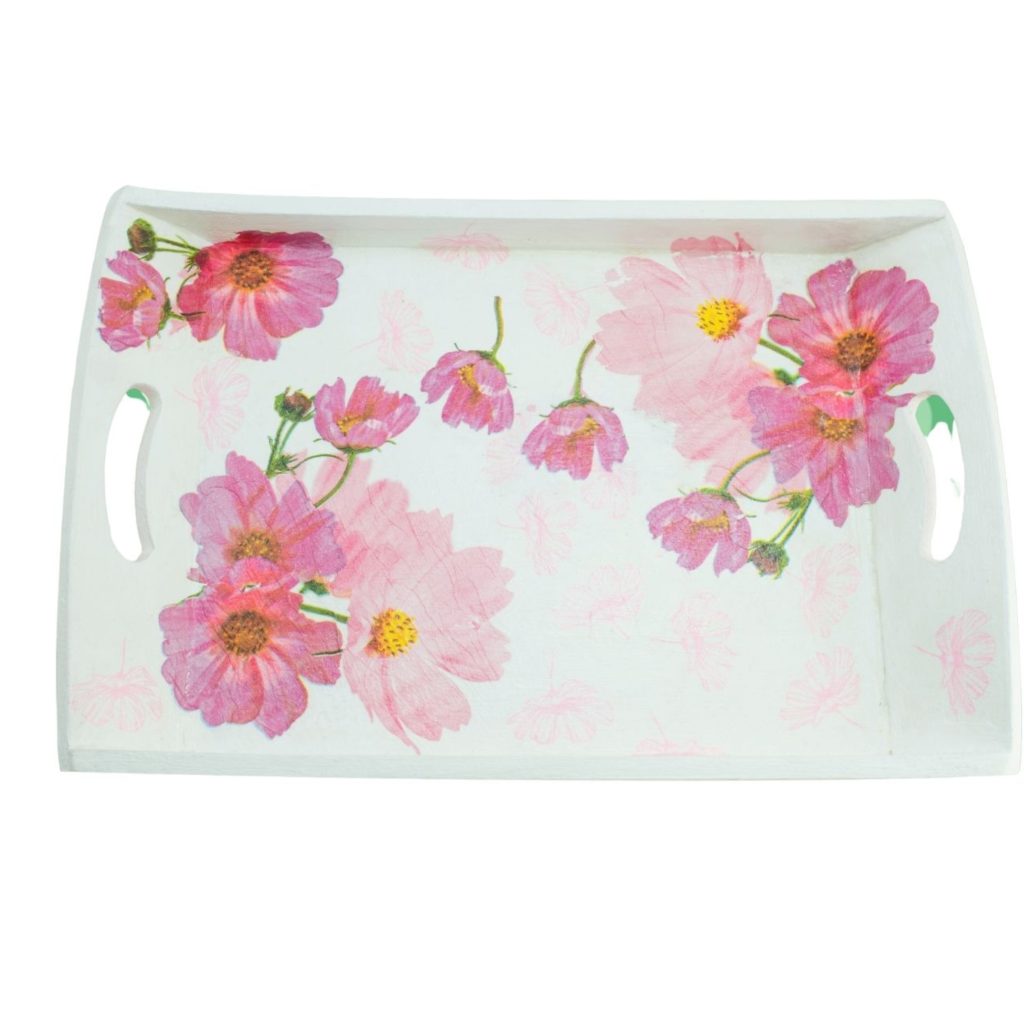Last Updated on May 7, 2024 by Team Ideas24
Decoupage, an ancient decorative art form, originated in China more than a thousand years ago. It’s a technique of decorating objects by gluing paper cutouts onto their surface and then coating them with transparent lacquer or varnish to give the appearance that the image is painted on.
It can transform any object into a unique piece of art, be it furniture, frames, boxes, or even household items, such as teapots, plates, and vases. This art form has gained increasing popularity in recent years, and for a good reason – its versatility is unmatched, and it’s accessible for beginners to try out.
If you’re interested in trying your hand at decoupage and wondering where to start, stick to this blog post to be guided through the art of decoupage, step-by-step. You’ll also get tips and tricks to make your projects successful. Get ready to dazzle your friends and family with your newfound crafting prowess!
Contents [show]
8 Simple Steps to Crafting Beautiful Homewares

1. Gather your materials
Before you start making beautiful homewares, gather your materials and tools. You don’t want to find yourself halfway through a project, and then have to go on a scavenger hunt for as simple as scissors or paper.
Some common supplies include:
- Decoupage paper or fabric: This is the primary material used in decoupage art. It can be purchased in various designs, colours, and textures to suit different decoupage projects.
- Decoupage glue: A specialized glue is used to adhere the paper or fabric to the surface. This glue is specifically designed for decoupage projects and helps to create a smooth, even finish.
- Brushes: Soft-bristled brushes are used to apply the decoupage glue and to smooth out the paper or fabric.
- Scissors: Sharp scissors are essential for cutting out paper or fabric designs.
- Surfaces: A variety of surfaces can be used for decoupage, including wood, glass, ceramic, and metal. The surface must be clean and free of any debris before starting the project.
- Sealant: This is applied to protect the surface and preserve the design.
Other optional decoupage supplies include decorative trim, stencils, and paint to add additional design elements to the project. With the right decoupage supplies and a bit of creativity, the possibilities for creating beautiful decoupage art are endless.
With all your materials in tow and your creative juices flowing, you’re ready to embark on your decoupage journey. Get cracking!
2. Choose your design
Decoupage provides freedom in terms of design. With this craft, you can let your creativity flow or choose from a multitude of design options to create a truly unique piece. Floral patterns, funky shapes, or even quirky cartoon characters are popular designs.
Floral patterns are a favourite because they are elegant and versatile. They can be depicted in a variety of styles, colours, and shapes, making them suitable for a range of projects, from vintage-inspired items to contemporary designs. Flowers can be arranged in a bouquet, scattered randomly, or placed in a border or corner of an object to create a striking effect.

Funky shapes and patterns are also famous designs, especially for those who prefer a more modern and eclectic style. These designs include abstract shapes, geometric patterns, or colourful prints. They can be used to add visual interest and a sense of playfulness to a range of objects, from furniture to home decor items.
Quirky cartoon characters are another well-loved design, particularly for children’s items such as toy boxes or room decorations. Decoupaging cartoon characters onto an object can create a fun and whimsical effect, adding personality and charm to an otherwise ordinary object.
But, you can create any design you desire using a range of materials and techniques. You can turn magazines or even tissue paper into stunning work of art you’ll adore.
3. Cut out your pieces precisely
Decoupage is all about precision and patience. When it comes to creating your masterpiece, you want to make sure you’re cutting out your pieces with utmost care.
Precision is key to creating a flawless and stunning work of decorative art. Don’t rip or tear, but instead take your time for a clean and defined edge.
4. Glue your pieces
Decoupage is a fun and creative way to turn ordinary objects into works of art, and the magic happens when you “glue your pieces.” That’s right, it’s time to get your glue on!

For this step, you’ll want to apply a thin layer of glue to your surface and carefully place your pieces on top. This is where the true beauty of decoupage comes to life.
5. Smooth out any bubbles or wrinkles
As you dive deeper into the world of decoupage, you’ll discover that attention to detail is key and that it includes ensuring a smooth and bubble-free surface. Whether you’re covering a small wooden box or a large vase, take the time to smooth out any bubbles or wrinkles for a flawless finish that will make your project shine.
It is all about creating a beautiful, personalized piece with your own two hands, so don’t let a few bumps get in the way of your creativity!
6. Repeat steps 4 and 5 until your surface is covered
Once you’ve picked out your papers and glued down the first layer, it’s time to add some depth with even more layers! That’s right, repeat steps 4 and 5 until your surface is covered in a beautiful collage of colours and textures.
This is where decoupage truly shines; the layering creates a beautifully textured effect that will have everyone asking, “how did you do that?”
With just a little patience and creativity, you can transform anything into a masterpiece.
7. Let it dry
As a beginner, it’s essential to make sure you’re following every step perfectly so that your end product truly stands out. One essential step that is often overlooked is allowing your work to fully dry.

Just like we need time to recharge after a long day, your decoupage project requires time to set. Patience is essential in achieving the perfect finish. So sit back, grab a cup of tea, and let your decoupage creation dry well!
8. Seal with a clear coat
It’s important to protect your masterpiece so you can enjoy it for longer. This is where the clear coat (varnish or lacquer) comes in. This will not only protect your creation from dust and damage but will also give it a glossy, professional finish that will make it truly shine.
So, don’t skip this vital step – seal your work of art with a clear coat and watch as it becomes a precious heirloom that can be treasured for generations to come!

Creative DIY Decoupage Ideas to Transform Your Home

Decoupage is a versatile art form that can be used to decorate a wide range of objects, from small trinkets to large furniture pieces. Here are some examples of decoupage projects:
Picture Frames
Decoupaging a picture frame with decorative paper or fabric is a popular and easy project. The frame can be painted or left as is, and the paper or fabric can be arranged to create a unique design. A plain picture frame can be transformed into a unique and beautiful display that complements the style and decor of the space.
Jewellery Boxes
A plain wooden jewellery box can be transformed into a beautiful and personalized organizer by decoupaging it with paper or fabric. Adding a coat of varnish or sealant can help protect the design and give it a perfect finish.
Furniture
Decoupage can be used to transform furniture into a unique and eye-catching piece. A dresser, for example, can be decoupaged with floral or geometric designs, giving it new life and style.
Gift Boxes
Decoupaging a gift box with decorative paper or fabric can add a personal touch to a gift. The box can be customized to suit the recipient’s style and preferences. It can be designed to suit the recipient’s favourite colours, patterns, or themes.
Serving Trays
Decoupaging a plain serving tray with a colourful and unique design can add life to dinner parties or gatherings. You can have additional embellishments, such as paint or stencils, to enhance the design further.

Walls
Decoupage can also be used to create wall art. Decoupaging a canvas with patterned paper or fabric can create a unique piece of art that can be displayed on a wall. You can decoupage with your favourite quote or phrase to make it even more unique.
Summary
To sum it up, decoupage is a fascinating and creative art form that has been practised for centuries. With this step-by-step guide for beginners, you can step into the world of decoupage and create beautiful and one-of-a-kind pieces of art.
Whether you’re using magazines or tissue paper, there are so many possibilities. Just be patient, experiment with different materials, and have fun as you explore the art of decoupage.




















